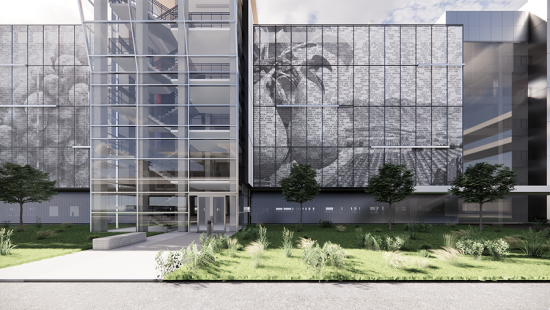Fall 2020: AAP Expands, Adapts to Cornell's New Normal
The College of Architecture, Art, and Planning will return to access to new spaces and classes, increased opportunities for creative cross-disciplinary collaboration, and renewed commitments to diversity and inclusion.
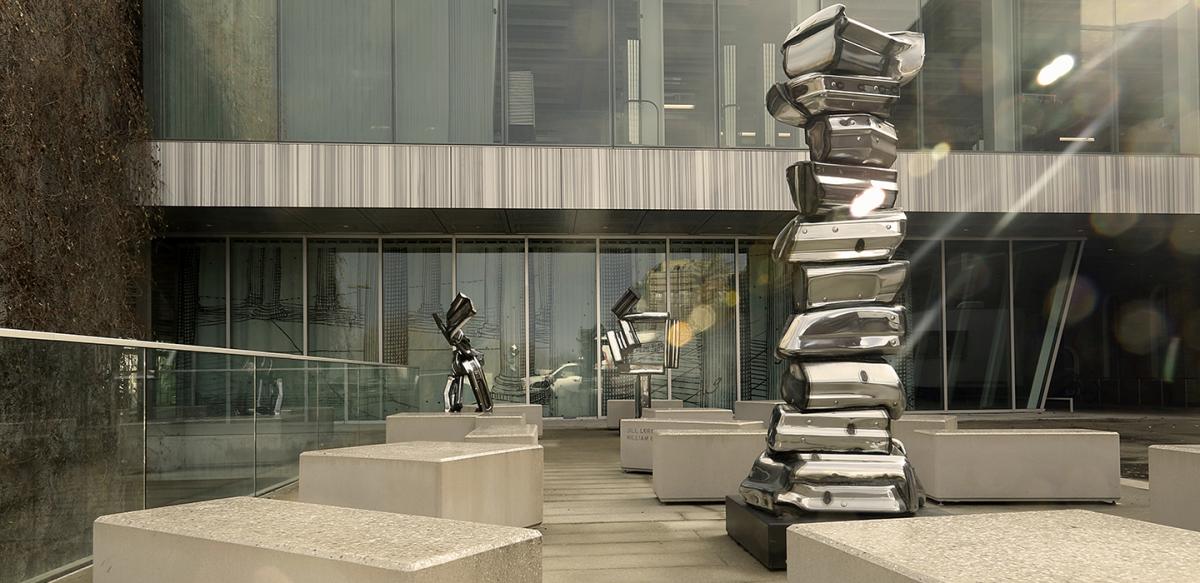
Faculty, staff, and college leadership at AAP have been planning for fall reactivation for months, and the implementation of a number of changes and updates is well underway as the beginning of the semester approaches. The effort has largely been a process of reimagining and expanding everything from classrooms to curricula — innovating for adaptive modes of instruction, updating course structures for flexibility, and reevaluating studio and course offerings in response to calls for greater diversity and inclusion in the college's academic programming.
This fall, students and faculty will find expanded offerings such as cross-disciplinary studios, classes, and workshops that offer increased opportunities for students to collaborate; renewed commitments to initiate and sustain community dialogue around the way AAP addresses racism and other forms of bias; and changed lecture, and symposia programs that provide inclusive contexts for research and practices in art and design. Other highlights include technological innovation across and beyond AAP spaces and studios to support in-person and remote learning, and a concerted college effort to see that students and faculty have access to what they need to engage a range of timely topics and challenges of the moment.
Teaching across time, space, and discipline
AAP's three disciplines are rooted in material practices for artists, designers, and architects. Object-making and direct critical feedback from faculty; exhibition in gallery spaces where viewers can observe, process, and discuss student work; and fieldwork where community interaction and the collection of data is key for planners who use what they find and gather to inform urban design decisions and policy proposals are essential aspects of college curricula. In a recent message to the college community, Dean J. Meejin Yoon referred to the coming semester as "a fall unlike any other, for all of us," while describing the plans for an expanded range of opportunities for students to overcome distances and work together with faculty around critical issues.

For the first time, architecture and planning students will collaborate in a design studio in New York City at AAP NYC, which will begin classes with the rest of the university on September 2. Alumnus Peter Robinson, founding board member of Blackspace Urbanist Collective, will return to AAP this fall to teach the studio. Robinson's studio will work closely with the New York City–based community organization My Brother's Keeper — an alliance founded by President Barack Obama in 2014 to "build safe and supportive communities for boys and young men of color."
Complementary to the studio topic, Sean Anderson, curator for the forthcoming exhibition Reconstructions: Architecture and Blackness in America at the Museum of Modern Art will be teaching a new architecture theory seminar at AAP NYC. Titled Property, the aim of the class will be to interrogate race and identity in the context of architecture. Anderson's seminar will lay the theoretical foundation for the spring 2021 Preston Thomas Memorial Lectures symposium.
Remote learning, in combination with in-person instruction in New York City, will also make it possible for planning students not officially enrolled in the AAP NYC program to participate in the 6-credit fall 2020 urban planning workshop taught by AAP NYC director Robert Balder (B.S. URS '89). This semester, the class will focus on neighborhoods in and around Jamaica Queens, where communities have been disproportionately impacted by COVID-19.
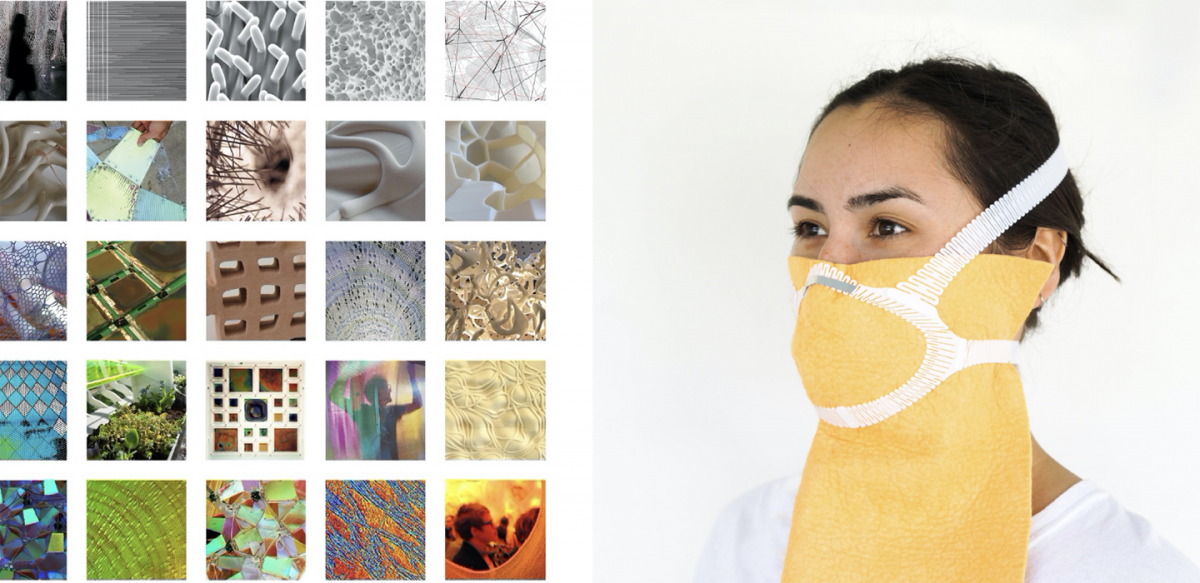
Now in its second year, associate professor of architecture and Matter Design Computation program director Jenny Sabin will continue to spearhead AAP's collaboration with Cornell Tech. This fall, Sabin will teach a new combined architecture option studio and seminar titled Designing and Making Across Disciplines: Architecture in COVID-19. The class aims to "engage and develop hybrid thinking in design through generative processes and digital fabrication of material and form." With the topic comes the central question for the studio: "From the politicization of masks in the U.S., to the disproportionate numbers of Black, Latinx, Indigenous, and minority communities affected the pandemic, to jaw-dropping gaps in supply chains of PPE for our front-line healthcare professionals, how have architects, engineers, and scientists responded to the challenges of COVID-19?"
In Ithaca, The Department of City and Regional Planning plans to offer in-person, remote, and hybrid classes as well as a new in-person class this spring. Planning under COVID, a timely graduate-level seminar will be taught by visiting faculty Tom Knipe (M.R.P. '11), alumnus, former principal planner for Tompkins County, and current director of the Office of Economic Development for the City of Ithaca. Given the local scope, the course will offer students opportunities to engage with planning professionals in developing real-world solutions for their communities.
Ithaca-based studios in both architecture and art will offer primarily in-person options, and all who plan to study on campus will be provided a studio desk surrounded by personal space in accordance with physical distancing. In part because of student emphasis on the importance of in-person instruction and studio space for making artwork, the Department of Art will offer all studios in-person. The galleries in Tjaden Hall have been temporarily converted to studios to increase space for instruction and making.

For many students, the opportunity to exhibit their work is an exciting part of their art education at Cornell. The generosity and cooperation of the Herbert F. Johnson Art Museum of Art has made it possible for the gallery review committee to think of the spaces in the museum as something of an extension of Tjaden's galleries, housing a regular rotation of installed individual and group shows that will have dedicated hours for viewing artwork and for architecture critique.
This summer, the art department also announced the conclusion of two assistant professor faculty searches that were underway during the shuffle of the end of the spring 2020 semester. New York City–based transdisciplinary artist, Alexandro Segade, has joined the art department and will teach the M.F.A. program's core graduate seminar this semester.
"We are thrilled to have Alexandro Segade join us this fall," said Michael Ashkin, associate professor and chair of the Department of Art. "As an artist, writer, teacher, and public intellectual, Alex brings remarkable resources to the department and college. Beyond his extensive and influential work as both a solo and collaborative artist with My Barbarian, he brings a wide range of interdisciplinary practices as well as theoretical and communitarian interests that will greatly enrich the experience of our students."
The department also announced that Leeza Meksin, an experienced educator and interdisciplinary artist working in painting, installation, textiles, public art, and multiples, will join the art faculty as an assistant professor, effective July 1, 2021.
The Department of Architecture, in anticipation of a fall term that would require architecture faculty to accommodate different needs and geographic locations, has procured a range of equipment and come up with technological solutions that will bridge in-person and remote learning environments. A combination of regular class meeting times, and groups of students who meet by time zones where necessary, will create a sense of collectivity that is so essential to architecture classes. In order to provide optimal flexibility, nearly all architecture studios will include hybrid teaching and learning components.
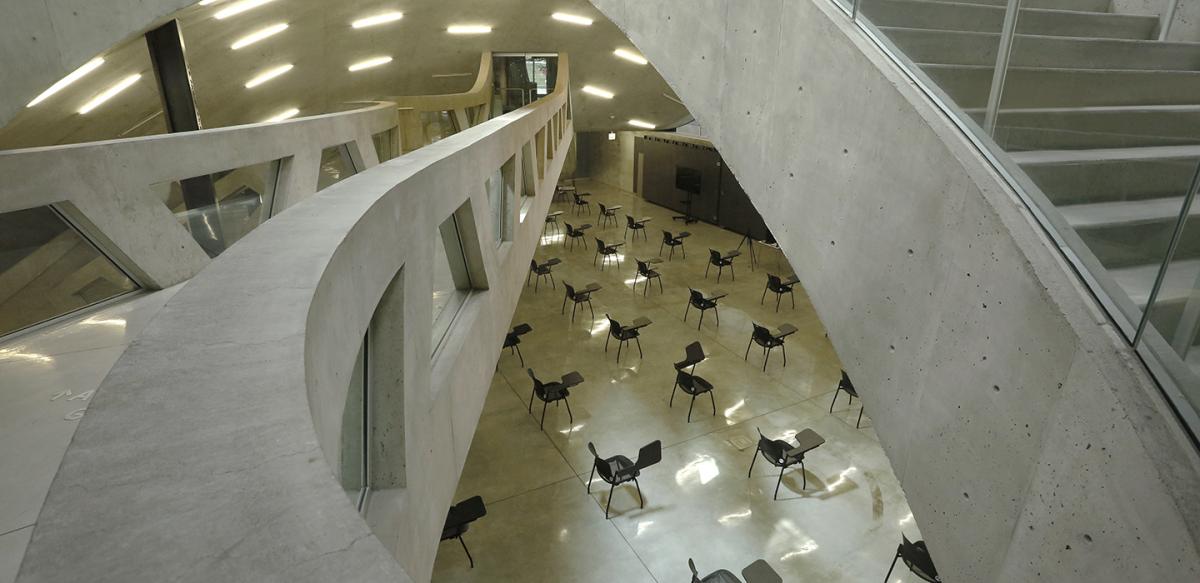
"It's been an enormous challenge, but a really interesting one," said Andrea Simitch, professor of architecture and chair of the architecture department. "Every course and every studio will have different layers and modes by which they are being delivered. Despite everything that has changed, I think that our willingness to come together, to adapt and respond, has resulted in an excitement and optimism among our students that I share."
Another crucial point of concern for AAP, a college that specializes in the material practices of making art and design, is the use of the shops and fabrication areas. Only a year ago, the college reopened Rand Hall with the reconstructed Mui Ho Fine Arts Library and a ground floor of shop space with new equipment that encompasses the robotic fabrication capabilities, a testing ground for experimental production techniques. In addition to work tables in the Rand shops, the facilities staff has created outdoor work tables for crafting, building, and other kinds of handwork.
"Use of the shop equipment, digital fabrication areas, and other kinds of workspaces is critical to certain studios that have a heavy emphasis on making, as well as for thesis students" explained AAP Director of Facilities Frank Parish. "We have dedicated a good deal of time to figuring out how to provide as much access and offer as many services as possible so that students can expect to make work at the same high standards as they always have."
In addition to working with the university architect to optimize AAP's spaces across Rand, Sibley, and Tjaden halls, as well as The Foundry, the college has identified alternative spaces to use as expanded studios, including the new Martin Y. Tang Welcome Center at the north entrance of campus beside Beebe Lake.
Engaged Extracurriculars: AAP Virtual Public Lectures and Symposia
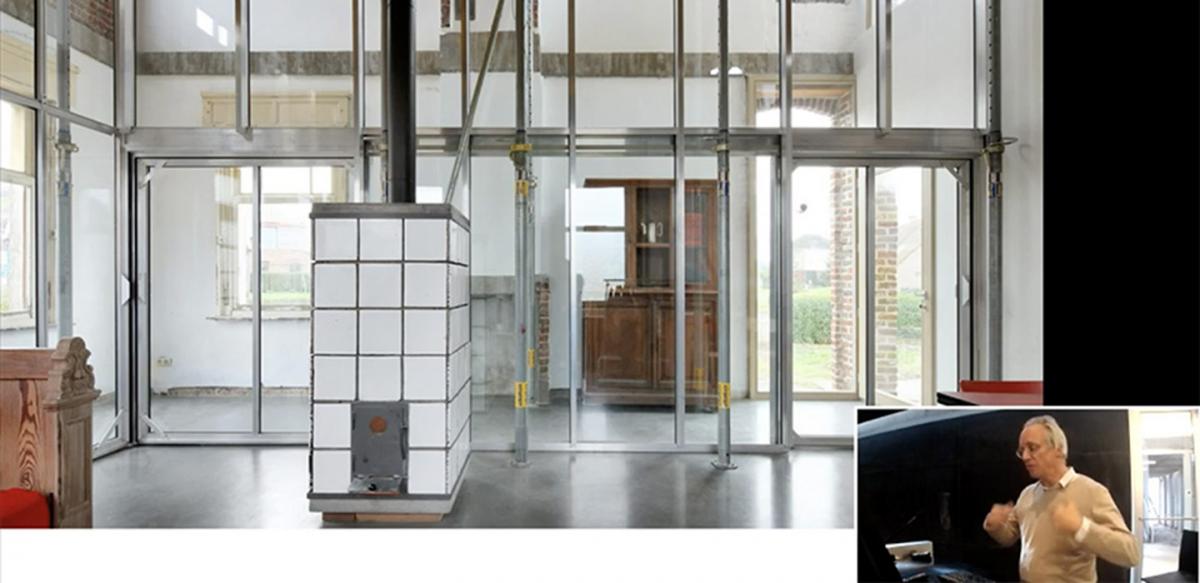
Each year, department faculty invite visitors and colleagues to classrooms and studios, and to the college for public lectures. This spring and summer, virtual lectures and webinars proved particularly well-attended not only by the AAP community, but also by students, faculty, and friends at institutions across the country and the world thanks to streaming technologies. This fall, the college will look to broaden access to lectures, record when possible, and create a web-based archive that will be available to the AAP community as a new resource for current work across the disciplines.
According to City and Regional Planning chair Jeffrey Chusid, the department will offer two lively lecture series that will bring some 15 speakers to campus — albeit virtually, this fall. "The talks will address some of the most critical issues in planning today," says Chusid. "We're very excited to invite planning professionals with a range of backgrounds and areas of expertise to the college to speak on topics ranging from racial capitalism to just sustainabilities."

Other CRP lectures and virtual public events will address topics such as CRP student work, projects, and research; U.S. and Chinese city responses to the 2020 fiscal crisis; affordable housing in Ithaca; quantitative vs. qualitative research methods and transportation planning; new ideas around the history of the "commons;" and relationships across social science, global crisis, and the United Nations Intergovernmental Panel on Climate Change, among others. Additionally, alumnus Ernst Valery '01 (B.S. '00) will kick off the Baker Program in Real Estate's distinguished lecture series on September 3 with a virtual discussion of his unique approach to urban development that works against gentrification by improving resident access to resources without the displacement of communities.
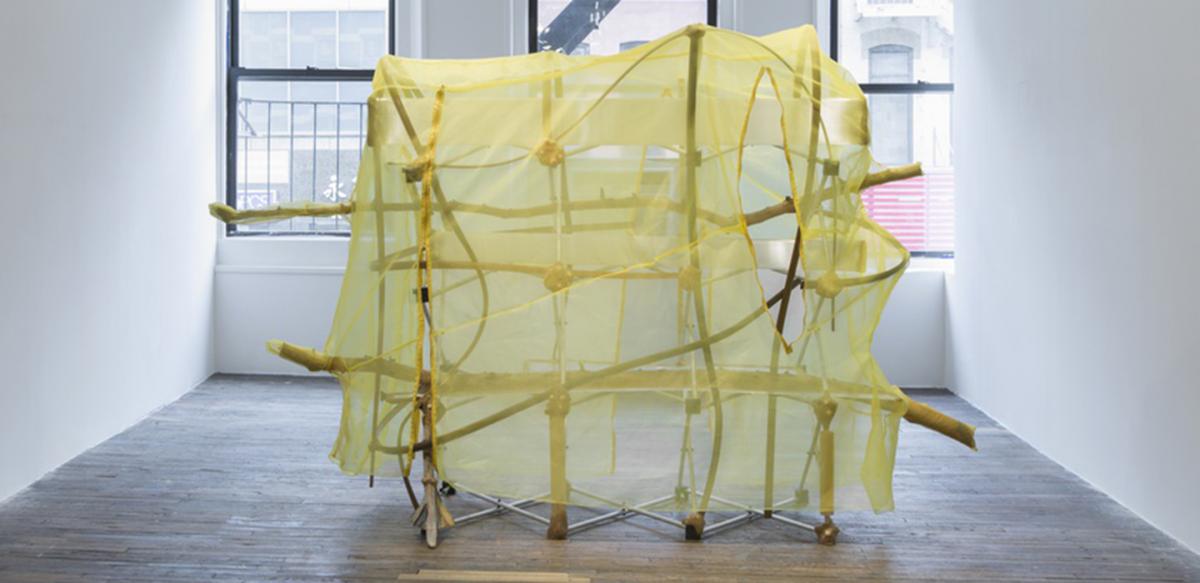
The Department of Art has a timely line-up of virtual artist lecturers this fall. Paul Vanouse, an emerging media artist will give a talk titled Making Difference; Jessi Reaves, a New York City-based sculptor and the department’s current Teiger Mentor in the Arts, will discuss her work; alumna photographer Sasha Phyars-Burgess (M.F.A.'18) will give a public lecture titled I'm Just Here So I Don't Get Fined; and Guadalupe Maravilla, a transdisciplinary artist recently recognized for his creative work in the vein of mutual aid for communities disproportionately impacted by the pandemic, will also give a talk on his work.

In the coming weeks, the Department of Architecture will announce details related to their regular lecture series. Lecturers to look forward to include: Vishaan Chakrabarti, founder of Practice for Architecture and Urbanism; Olalelkan Jeyifous (B.Arch. '00), Brooklyn-based artist and designer; Laura Kurgan, professor of architecture at GSAAP where she also directs the Center for Spatial Research and the Visual Studies curriculum; Lesley Lokko, professor and dean of Bernard and Anne Spitzer School of Architecture at the City College of New York; architectural artists and filmmakers Ila Bêka and Louise Lemoine; James Wines, founder and president of SITE, an environmental architecture office in New York City; Momoyo Kaijima, of Atelier Bow-Wow in Tokyo; and Brandon Clifford and Wes McGee of Cambridge, Massachusettes–based Matter Design Studio.

Assistant professor of the History of Architecture and Urban Development Samia Henni will structure discussion and a series of lectures that look at past and present exploits of desert landscapes the world over. Pictured: "Small Boy" nuclear test in Nevada, July 14, 1962. photo/ The National Nuclear Security Administration Nevada Site Office Photo Library
This fall's Preston Thomas Memorial Lectures Symposium, "Into the Desert: Questions of Coloniality and Toxicity," will be organized by History of Architecture and Urban Development assistant professor Samia Henni. Over an approximated 12 weeks, a series of lectures will take place weekly alongside Henni's seminar that will "explore the ways in which politicians, scientists, and architects developed, exploited, colonized, transformed, urbanized, militarized, or polluted the underground or overground territories of deserts in the aftermath of WWII." A larger public event centered around work featured at select Venice Biennale of Architecture pavilions is planned for early November.
2020 Diversity and Inclusion Efforts at AAP
Henni is also co-chair, along with CRP associate professor Neema Kudva, of the AAP Council for Diversity and Inclusion (D&I) that convened this summer to gather the AAP community's thoughts on discussions, teaching, and established institutionalized processes as they relate to race, racism, difference, belonging, bias, and redress. Dean Yoon outlined the basis of the work to be done following a national resurgence in the movement for racial justice. The council is made up of faculty, staff, and students from across the college that were either invited or who self-selected to participate on behalf of each unit or department at AAP.
The council's charge is to discuss and organize action around five core items: a comprehensive report on the makeup of the college to identify and address existing inequities; to explore the possibility of appointing a dedicated diversity officer to support students from underrepresented backgrounds through their AAP experience; to propose strategies and models for removing structural barriers and expanding opportunities for Black, underrepresented, first-generation, and marginalized students; to examine AAP's recruitment and retention of faculty from all backgrounds who have deep expertise and share AAP's commitment to diversity and excellence in the college; to support the development of new syllabi, courses, seminars, and research that strengthen the college's anti-racist principles and actions with knowledge; and most broadly, to take action toward an anti-racist community at AAP.
Henni, Kudva, and the D&I Council organized and led the first Town Hall in July and presented their overarching intent and structure. They also welcomed initial responses, thoughts, ideas, and reflections on race and racism at AAP from those who attended. The next Town Hall is scheduled to take place in October and will include a presentation of the work of the council and the department-level diversity and inclusion committees to date. The council will also share a drafted plan of action for feedback, and facilitate a follow-up discussion of topics addressed at the first town hall.
New Perspectives, New Responsibilities
In her welcome message, Dean Yoon noted that for those returning to Ithaca, there will be expanded and adapted spaces meant to support new ways of teaching, learning, and creating. And for those who remain remote, AAP intends to provide a sense of connection and collectivity despite distances. The faculty and staff — equipped with new perspectives on both possibilities and responsibilities — are prepared to respond and continue to engage issues and problems with imagination, rigor, and care for one another.
"I continue to be inspired by the drive of our whole community to push past boundaries, to actively rethink existing models and structures in response to today's most critical questions, and to constantly expand our collective thought and imagination,” said Yoon in her message. "There is still much to do at AAP and beyond, yet I believe we have much to look forward to as we continue to imagine, shape, and build a worthy future under truly exceptional circumstances."
By Edith Fikes






